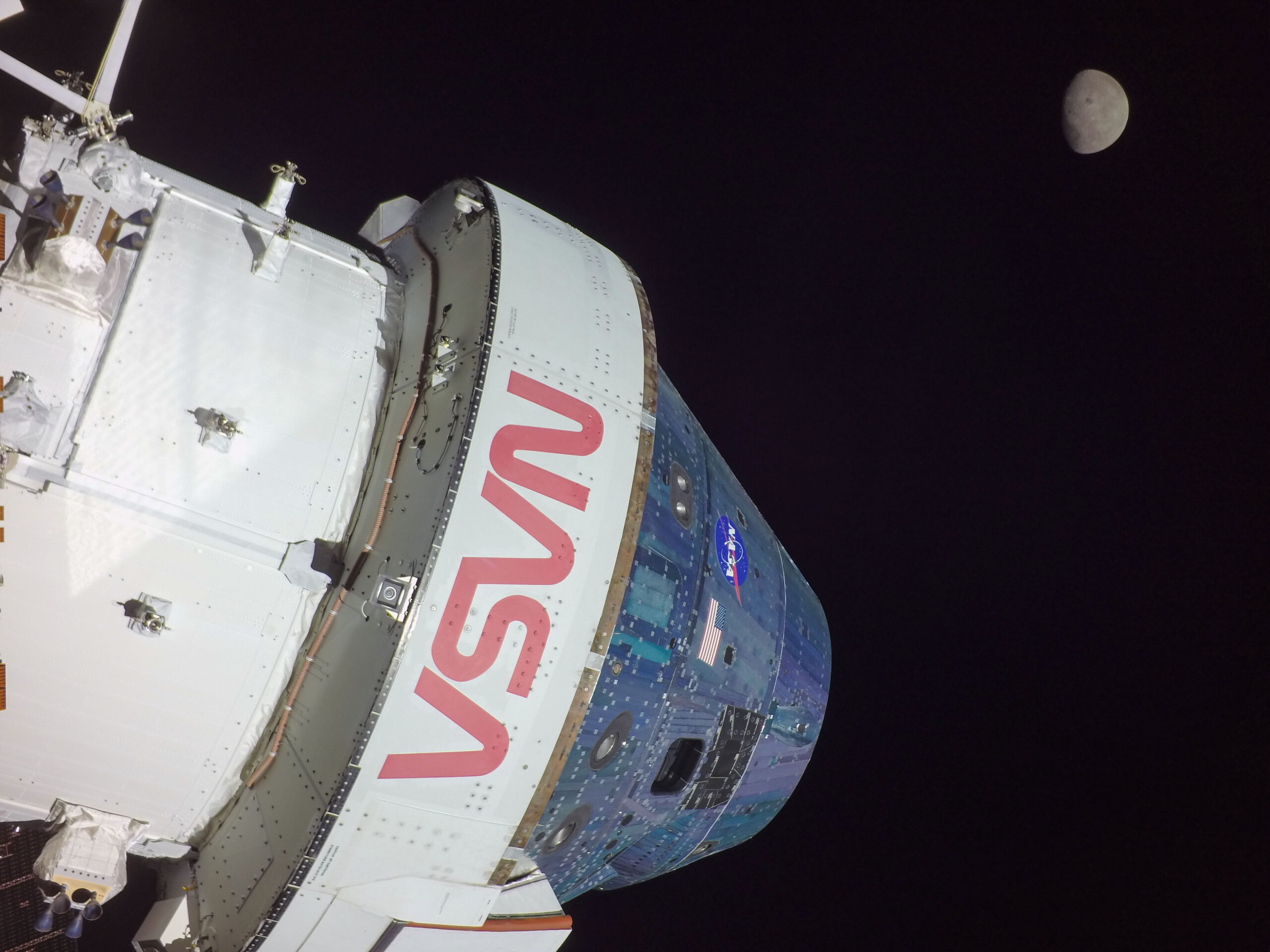
NASA’s new era of Artemis exploration continues gathering momentum as the unpiloted Orion crew capsule successfully completed its outbound powered flyby (OPF) engine burn Monday morning, Nov. 21, and made its closest flyby of the Moon – keeping the human space vehicle and Artemis 1 mission precisely on track for targeting its distant retrograde orbit (DRO) trajectory while simultaneously snapping luscious selfie lookbacks to the Earth and Moon, just five days after the spectacular thunderous blastoff from the Kennedy Space Center (KSC) in Florida.
Orion successfully performed the outbound powered flyby burn at 7:44 a.m. EST, Monday, Nov. 21, while traveling on the far side of the Moon with a firing of the orbital maneuvering system engine (OMS) engine attached to the base of the ESA Orion service module for 2 minutes and 30 seconds while traveling at 5,023 mph.
Orion is exceeding expectations from NASA, the industry teams, and the European partners at ESA that built the SLS, Orion crew module, service module, ground hardware, and all associated systems.
The OMS engines are recycled from the space shuttle and repurposed for Orion. This OMS engine flew on 19 shuttle missions between 1984 and 2002.

Since Orion was behind the Moon there were no radio communications at the time the OPF OMS burn when it started and completed – as planned.
Engineers had to wait until Orion reemerged from behind the Moon to determine if it was successful.
At the time of the OPF burn, Orion was traveling 328 miles above the Moon and descending. This maneuver accelerated the spacecraft at a rate of more than 580 mph to a speed of 5,102 mph after the burn.
Orion next re-acquired signal (AOS) with NASA’s Deep Space Network, at 7:59 a.m. EST after successfully performing the outbound powered flyby burn.
“Today, Orion came within a mere 80 miles of the Moon, some 231,000 miles from Earth. This is a huge step for the Artemis I mission and critical to understanding our spacecraft before we fly astronauts on it to the Moon. Congratulations to the tens of thousands of team members and partners who have gotten us to this point. This is not just your achievement but one for humanity,” said NASA Administrator Bill Nelson.
“The Artemis Generation spans the globe and we are united by a shared belief in exploring the cosmos for the good of all.”
Shortly after the outbound flyby burn, Orion passed about 1,400 miles above the Apollo 11 landing site at Tranquility Base at 8:37 a.m. Orion later flew over the Apollo 14 site at about 6,000 miles in altitude and then over the Apollo 12 site at an altitude of about 7,700 miles
At the time of the lunar flyby, Orion was more than 230,000 miles from Earth.

The OPF put Orion on track for its trajectory to enter the distant retrograde orbit it will travel through during the course of the 25.5-day-long Artemis 1 mission.
“The mission continues to proceed as we had planned, and the ground systems, our operations teams, and the Orion spacecraft continue to exceed expectations, and we continue to learn along the way about this new, deep-space spacecraft,” said Mike Sarafin, Artemis I mission manager, in a Nov 21 media briefing at NASA’s Johnson Space Center, in Houston, Texas.
The OPF burn was the first of two maneuvers required to enter the distant retrograde orbit around the Moon.
The spacecraft will perform the distant retrograde orbit insertion burn later this week on Friday, Nov. 25, again using the OMS engine on the European Service Module, which will place it into the DRO orbit.

The orbit is “distant” in the sense that it’s at a high altitude from the surface of the Moon, and it’s “retrograde” because Orion will travel around the Moon opposite of the direction the Moon travels around Earth, according to NASA.
“This orbit provides a highly stable orbit where little fuel is required to stay for an extended trip in deep space to put Orion’s systems to the test in an extreme environment far from Earth.”
Orion will remain in this orbit for about a week to test systems onboard the spacecraft.
According to NASA, the distant retrograde will take the Orion capsule 40,000 miles past the Moon before it comes back to Earth. Orion’s greatest distance from the Earth – 268,500 miles – will occur on Monday, Nov. 28 at 3:05 p.m. CST. Orion’s greatest distance from the Moon will be on Friday, Nov. 25 at 3:53 p.m. CST at a distance of 57,250 miles.”



